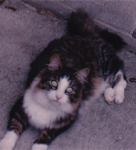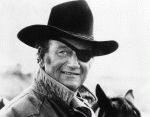Hey everyone,
Thanks in advance for your responses.
Ok to make a long story short:
-i was diagnosed with Obstructive sleep apnea in 2005
- started usng cpap machine
-never felt better
-in 2010 i visited wth ENT doctor
- did anothers sleep study
-ENT said i had deviated septum and polyps
- December 2010 Went into surgey to correct deviated septum
- Recovered for a few months
- 2012 -present: still feel tired and cpap/surgey has not helped
- received last sleep study(the one before surgery)
- Noticed that i had alot of "SPONTANEOUS AROUSALS"
- 0 OBSTRUCTION AROUSALS
Seeking advise form people who have been through this.
"I FEEL LIKE THESE DR#'S ARE MiSDIAGNOSING ME"!!!
PLS READ MY SLEEP STUDY AND LET ME KNOW WHAT YOU THINK#
Letter of Interpretation
PSG
Patient:? Date of Service: ?
D.O.B. Place of Service: Referring Physician: ? Interpreting Physician:?
Patient History: ____?___ is a 28 year-old Male who is 70 inches tall, weighs 236 pounds and has a BMi of 33.8 and a neck circumference of 16 inches. He presents with complaints of being sleepy all day, snoring and waking up with my left foot hurting. His medical history includes Prostate problems. Known current medication is Suffameth/Trimethropin which He took on the day of the test. He does use tobacco products. He had 6 hours of steep the previous night and
indicated that this was not adequate. The patient consumed 0 caffeinated and 0 alcoholic beverages on the day of the test. The patient indicated that he did not take a nap on the day of the test. Epworth Sleepiness Scale =
10, which indicates mild daytime sleepiness.
Protocol: This sleep study included recording and monitoring of EEG, EOG, EMG, ECG, respiratory effort and flow, snoring, pulse oximetry, and position. Video recordings were obtained as needed. A qualified sleep technologist continuously
monitored the patient throughout the night. Data was digitally stored and tabulated using Viasys software. Sleep staging and respiratory events were scored manually using AASM standards.
Test Information:
Lights Out: 22:01 Lights On: 05:24 Pre-B/P: 134/84 Post-B/P: 1 34/80
PSG
Sleep Architecture
Total Study Time: 443.5 minutes REM Latency: 133.5 minutes
Total Sleep Time: 245.5 minutes Sleep Efficiency: 55.4 % Normal: >90%
Sleep Latency: 127.5 minutes Awake after Steep: 70.5 minutes
Normal
Stage 1: 11.8 % 29 minutes 5%-10%
Stage 2: 56.8 % 139.5 minutes 55%-62%
Stage 3+4: 14.7 % 36 minutes 5%-20%
Stage REM: 16.7 % 41 minutes 21%-25%
Respiratory Events
Obstructive Apneas: 0 Apnea / Hypopnea Index: 5.6 Normal: <5 per hour / sleep
Hypopneas: 24 N-REM Event index: 0
Central Apneas: 0 REM Event Index: 19.
Mixed Apneas: 0 Supine Event Index: 4
Total Events: 24 REM / Supine Index: 51
Sp02 Statistics
Sp02 Baseline: 92 % Sp02 Minimum: 82 %
Time below 88%: 5.3 min. # of Desaturations: 24
RERA 0
PLMS Events
# of PLMS: 0 PLMS index: 0 per hour / sleep
Arousal Statistics
PLMS Arousals: 0 PLMS Arousal Index: 0
Resp. Arousals: 4 Rey, Arousal Index: 1,
Snore Arousals: 8 Snore Arousal Index: 2.
Spontaneous Arsis: 21 Spontaneous Arsi. Index: 5.1
Total Arousals: 33 Total Arousal Index: 8.1
©2006 GATISH
Patient: ? Date of Service: ?
Observations:
Mr. __?__ appears to have poor sleep quality with sleep efficiency of 55.4% and 33 arousals with an Arousal Index of 8.1 arousals per hour. His sleep architecture is abnormal with an increase in Wake and Stage 1 with a decrease in REM steep. Steep onset was delayed with a latency of 127.5 minutes and REM onset was delayed with a latency of 133.5
minutes. Patient slept in the supine, right and left lateral positions during the night. Prior to "Lights Out", the patient did not have complaints of pain or discomfort. He felt that his sleep in the lab was the same quality as his normal steep at home.
Respiratory events are mild with an overall AHI of 5.6 events per hour of sleep and a REM AHI of 19. events per hour. The technician described the patient's snoring as moderate. His EKG showed a normal sinus rhythm. His baseline oxygen saturation was 92% and his minimum oxygen saturation was 82%.
No periodic limb movements were noted.
Mr. __?__ normal bedtime is 11 PM and he gets out of bed at 5:30 AM, not feeling refreshed. He typically
does not wake up during the night. He admits to reading and watching television while in bed. The patient also takes no naps during the day. He describes his main sleep problem as being sleepy all day, snoring and waking up with my left foot hurting.
Scored by:
Impression:
1. Mild Sleep Apnea (780.53)
2. OSA significantly worse during REM sleep (780.53)
3. Obesity (278.00)
Recommendation:
1. A CPAP titration study is recommended.
Acquisition Tech.:
2. Due to the patient's disordered breathing, it is recommended that the patient avoid sedatives, alcohol, and
smoking within two hours of going to bed. These substances are known to make the breathing events more severe.
3. Improved steep hygiene.
4. Due to evidence that weight can significantly improve steep disordered breathing, it is strongly recommended that
the patient consider losing weight. A regular diet and exercise program is recommended.
5. ENT evaluation for nasal and oral airway obstruction is recommended.
6. TSH levels Evaluation if Hypo Thyrodism suspected.
THANKS ALL!!
7 YEARS ON CPAP*DONT FEEL BETTER*PLS READ MY SLEEP STUDY*
7 YEARS ON CPAP*DONT FEEL BETTER*PLS READ MY SLEEP STUDY*
_________________
| Mask: FlexiFit HC431 Full Face CPAP Mask with Headgear |
| Additional Comments: INLUDES HUMIDIFIER AND SMART CODE SOFTWARE |
Re: 7 YEARS ON CPAP*DONT FEEL BETTER*PLS READ MY SLEEP STUDY*
zalez, in what way(s) do you feel you're being misdiagnosed? I'm sure the experts will be along to give you some feedback but I think they will be able to help you more if you have some specific questions about your report. What in particular are you questioning? Did you have a sleep study any time after your surgery?
_________________
| Machine: AirSense 10 AutoSet with Heated Humidifer + Aifit N30i Nasal Mask Bundle |
| Additional Comments: SleepyHead-now-OSCAR software on Mac OSX Ventura |
Re: 7 YEARS ON CPAP*DONT FEEL BETTER*PLS READ MY SLEEP STUDY*
It would help a lot to know what equipment you have - click on User Ctl Panel under the logo above, then on Profile and enter the complete names and model #'s of your machine and mask (text please, not icons) and we'll see that automatically when you post each time... If you use a nasal (vs full face) mask but are a mouth breather when asleep you haven't really been getting treated at all - losing all the cpap air to the wind, so it's one factor to consider, but give us a little more to go on in terms of your sleep habits and impressions of what happens and we'll try to find some answers.
- Sgt_Pepper
- Posts: 25
- Joined: Thu May 24, 2012 11:28 am
- Location: Florida
Re: 7 YEARS ON CPAP*DONT FEEL BETTER*PLS READ MY SLEEP STUDY*
Zalez
The report mentioned suspected hypo-thyroidism. Did you ever follow up on that?
Speaking as one who has brought his BMI down .. this could be part of the problem.
For some, xPAP may be the single 'silver bullet' that works. Some of us seem to need a variety of things. There's really no downside and plenty of upside to getting the thyroid checked and managed if necessary, lowering BMI, establishing good sleep hygiene habits - even if they're not the complete solution.
I wish you well.
The report mentioned suspected hypo-thyroidism. Did you ever follow up on that?
Speaking as one who has brought his BMI down .. this could be part of the problem.
I've been on a journey the last several months to find the root cause of excessive day time sleepiness. Been on CPAP for 5 years now. The doctors seem a whole lot more willing to help me when I do the things to help myself - such as follow all of their advice (I like most people want to follow only the parts I agree with or like ), do the things I can do to help manage the situation (I brought my BMI down to the low 20s - high BMI is bad medicine in a lot of ways), established good sleep hygiene, got the thyroid situation under control.zalez wrote:and has a BMi of 33.8
For some, xPAP may be the single 'silver bullet' that works. Some of us seem to need a variety of things. There's really no downside and plenty of upside to getting the thyroid checked and managed if necessary, lowering BMI, establishing good sleep hygiene habits - even if they're not the complete solution.
I wish you well.
_________________
| Machine: AirSense™ 10 Elite CPAP Machine with HumidAir™ Heated Humidifier |
| Mask: AirFit™ P10 Nasal Pillow CPAP Mask with Headgear |
Resmed Airsense A10 Elite CPAP
Resmed AirFit P10 Mask
Heated Hose
Resmed AirFit P10 Mask
Heated Hose
Re: 7 YEARS ON CPAP*DONT FEEL BETTER*PLS READ MY SLEEP STUDY*
Hey everyone thanks for your replies.
No I have not had a sleep study after surgery.
Yes i had mt thyroid check and it was normal (01/2012)
and my questions are: IF I HAVE 0 OBSTRUCTIVE SLEEP OROUSALS WOULDNT THAT RULE OUT OSA.
21 SPONTANEOUS AROUSALS" SHOULDNT THAT RAISE A RED FLAG THAT THERE IS SOMETHING ELSE WRONG"
Makes me think that my ENT went ahead and did a surgery one my nose just for $$ even though there was no obstruction.
**ALSO I NO LONGER SMOKE (7 MONTHS) AND IM 258LBS NOW**
Let me know what you guys think?
No I have not had a sleep study after surgery.
Yes i had mt thyroid check and it was normal (01/2012)
and my questions are: IF I HAVE 0 OBSTRUCTIVE SLEEP OROUSALS WOULDNT THAT RULE OUT OSA.
21 SPONTANEOUS AROUSALS" SHOULDNT THAT RAISE A RED FLAG THAT THERE IS SOMETHING ELSE WRONG"
Makes me think that my ENT went ahead and did a surgery one my nose just for $$ even though there was no obstruction.
**ALSO I NO LONGER SMOKE (7 MONTHS) AND IM 258LBS NOW**
Let me know what you guys think?
_________________
| Mask: FlexiFit HC431 Full Face CPAP Mask with Headgear |
| Additional Comments: INLUDES HUMIDIFIER AND SMART CODE SOFTWARE |
Last edited by zalez on Sun Jul 22, 2012 9:41 am, edited 2 times in total.
Re: 7 YEARS ON CPAP*DONT FEEL BETTER*PLS READ MY SLEEP STUDY*
Do you have Upper Airway Resistance Syndrome (UARS)?
Clinical Features
(abbreviated)
Patients with UARS have symptoms similar to those seen in OSAS, although there are some distinct features. Much of the research performed has attempted to identify and describe a group of patients with significant daytime sleepiness and disrupted sleep, but without the other dominant clinical features seen in OSAS. Typical symptoms reported by patients with UARS include excessive daytime sleepiness, fatigue, difficulty concentrating, morning headaches, and unrefreshing sleep. There can be also be a significant impairment in daytime functioning; a recent study demonstrated that subjects with UARS performed worse than patients with obstructive sleep apnea hypopnea syndrome and normal control individuals on different aspects of the Psychomotor Vigilance Task. Individuals with abnormal airway anatomy are at increased risk, including those with a decreased retrolingual space, narrow nasal passages, or a small neck circumference. Patients are typically not obese, with a mean BMI often <25 kg/m. They are also usually younger than those in whom OSAS is diagnosed, with a mean age of approximately 38 years. Snoring is not a requisite symptom, with 10% to 15% or more of patients having never or only intermittently snored.
Patients with UARS are also more likely to report symptoms of frequent nocturnal awakening with difficulty falling back to sleep. This is thought to be a potential reason for increased complaints of insomnia amongst patients with UARS, including sleep onset and sleep maintenance problems. In addition to difficulties with acute insomnia, patients with UARS also have an increased likelihood of carrying a diagnosis of chronic insomnia. Other notable complaints include parasomnias, especially sleepwalking, sleep talking, and sleep terrors. Patients may also have symptoms of abnormal autonomic function, including lightheadedness or dizziness on rising from a supine or sitting position, cold hands and feet, and low resting blood pressures (defined as a systolic BP <105 mm Hg with a diastolic BP <65 mm Hg). Interestingly, all subjects in a study had evidence of a small oral cavity on examination with a narrowed airway space dimension on cephalometric radiographs, consistent with other reports. Patients with UARS have increased rates of symptoms such as gastroesophageal reflux, muscular pain, diarrhea, abdominal pain, depression, and anxiety.
________________________________________
Clinical Features Associated With UARS
Daytime symptoms
Excessive daytime sleepiness
Fatigue
Morning headaches
Myalgia’s [muscle pain]
Difficulty concentrating
Sleep disturbances
Frequent nocturnal awakenings
Difficulties initiating sleep
Insomnia
Bruxism [teeth clenching]
Restless leg syndrome
Unrefreshing sleep
Autonomic nervous system
Hypotension
Orthostasis [maintenance of an upright standing posture]
Cold hands and feet
Functional somatic syndrome associations
Depression
Anxiety
Chronic fatigue syndrome
Irritable bowel syndrome
Fibromyalgia
Polysomnographic abnormalities
Increased RERAs
Increased nocturnal arousals
Increased CAP rate [cyclical alternating pattern in EEG]
Alpha intrusion during sleep
Source: http://www.chestnet.org/accp/pccsu/uppe ... e?page=0,3
p.s. That full face mask F&P #431 (and also #432) that you're using ruined my treatment for almost a year. Lots of leaks. These masks cushions don't use the double Silicone flaps for sealing, like other more advanced masks use.
________________________________________
Clinical Features
(abbreviated)
Patients with UARS have symptoms similar to those seen in OSAS, although there are some distinct features. Much of the research performed has attempted to identify and describe a group of patients with significant daytime sleepiness and disrupted sleep, but without the other dominant clinical features seen in OSAS. Typical symptoms reported by patients with UARS include excessive daytime sleepiness, fatigue, difficulty concentrating, morning headaches, and unrefreshing sleep. There can be also be a significant impairment in daytime functioning; a recent study demonstrated that subjects with UARS performed worse than patients with obstructive sleep apnea hypopnea syndrome and normal control individuals on different aspects of the Psychomotor Vigilance Task. Individuals with abnormal airway anatomy are at increased risk, including those with a decreased retrolingual space, narrow nasal passages, or a small neck circumference. Patients are typically not obese, with a mean BMI often <25 kg/m. They are also usually younger than those in whom OSAS is diagnosed, with a mean age of approximately 38 years. Snoring is not a requisite symptom, with 10% to 15% or more of patients having never or only intermittently snored.
Patients with UARS are also more likely to report symptoms of frequent nocturnal awakening with difficulty falling back to sleep. This is thought to be a potential reason for increased complaints of insomnia amongst patients with UARS, including sleep onset and sleep maintenance problems. In addition to difficulties with acute insomnia, patients with UARS also have an increased likelihood of carrying a diagnosis of chronic insomnia. Other notable complaints include parasomnias, especially sleepwalking, sleep talking, and sleep terrors. Patients may also have symptoms of abnormal autonomic function, including lightheadedness or dizziness on rising from a supine or sitting position, cold hands and feet, and low resting blood pressures (defined as a systolic BP <105 mm Hg with a diastolic BP <65 mm Hg). Interestingly, all subjects in a study had evidence of a small oral cavity on examination with a narrowed airway space dimension on cephalometric radiographs, consistent with other reports. Patients with UARS have increased rates of symptoms such as gastroesophageal reflux, muscular pain, diarrhea, abdominal pain, depression, and anxiety.
________________________________________
Clinical Features Associated With UARS
Daytime symptoms
Excessive daytime sleepiness
Fatigue
Morning headaches
Myalgia’s [muscle pain]
Difficulty concentrating
Sleep disturbances
Frequent nocturnal awakenings
Difficulties initiating sleep
Insomnia
Bruxism [teeth clenching]
Restless leg syndrome
Unrefreshing sleep
Autonomic nervous system
Hypotension
Orthostasis [maintenance of an upright standing posture]
Cold hands and feet
Functional somatic syndrome associations
Depression
Anxiety
Chronic fatigue syndrome
Irritable bowel syndrome
Fibromyalgia
Polysomnographic abnormalities
Increased RERAs
Increased nocturnal arousals
Increased CAP rate [cyclical alternating pattern in EEG]
Alpha intrusion during sleep
Source: http://www.chestnet.org/accp/pccsu/uppe ... e?page=0,3
p.s. That full face mask F&P #431 (and also #432) that you're using ruined my treatment for almost a year. Lots of leaks. These masks cushions don't use the double Silicone flaps for sealing, like other more advanced masks use.
________________________________________
_________________
| Humidifier: S9™ Series H5i™ Heated Humidifier with Climate Control |
| Additional Comments: S9 Autoset machine; Ruby chinstrap under the mask straps; ResScan 5.6 |
Last edited by avi123 on Sun Jul 22, 2012 11:20 am, edited 1 time in total.
see my recent set-up and Statistics:
http://i.imgur.com/TewT8G9.png
see my recent ResScan treatment results:
http://i.imgur.com/3oia0EY.png
http://i.imgur.com/QEjvlVY.png
http://i.imgur.com/TewT8G9.png
see my recent ResScan treatment results:
http://i.imgur.com/3oia0EY.png
http://i.imgur.com/QEjvlVY.png
Re: 7 YEARS ON CPAP*DONT FEEL BETTER*PLS READ MY SLEEP STUDY*
You have normal amount of arousals. The cutoff for "abnormal" is an arousal index of 15-20. That means 15-20 an hour, you had an arousal index of 8.











